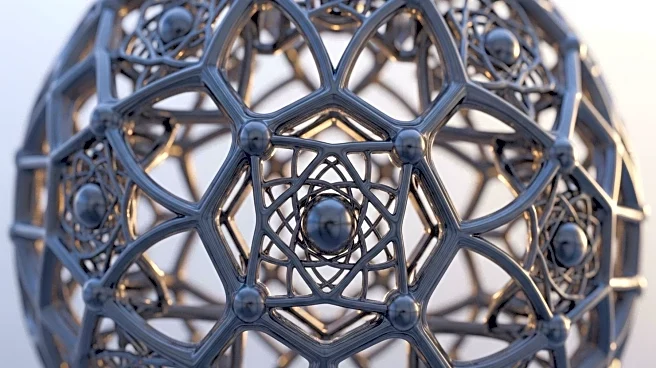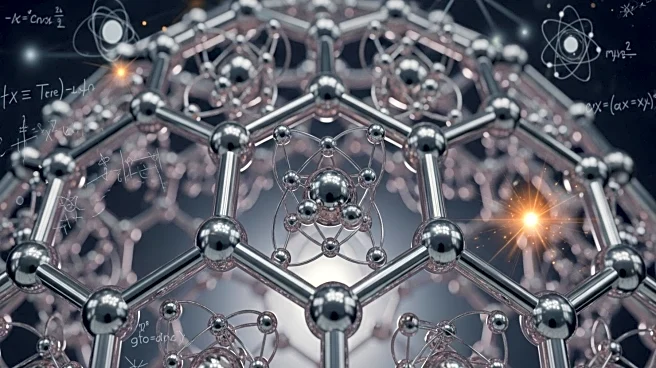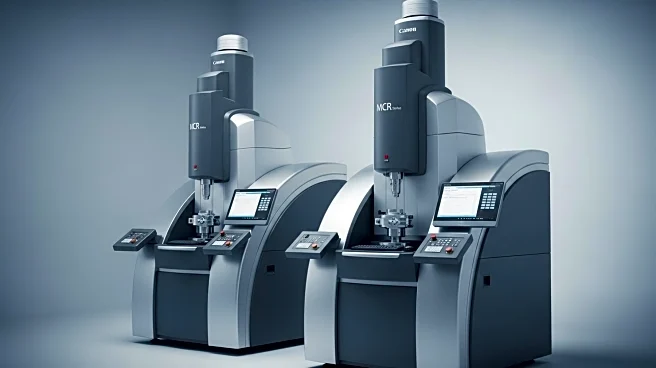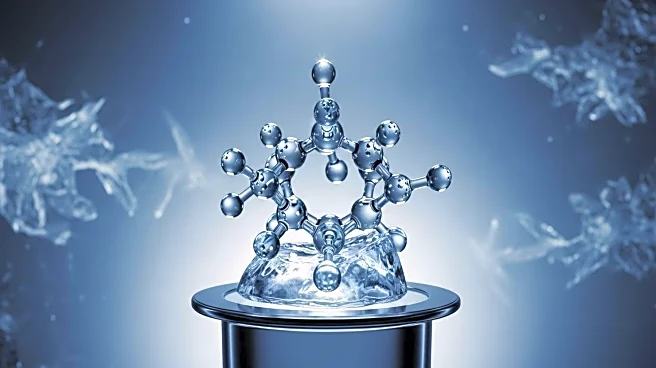What's Happening?
Researchers at MIT have uncovered that subtle chemical patterns within metal alloys persist even after standard industrial manufacturing processes. This discovery challenges the conventional belief that metals
become completely uniform at the atomic level during processing. The study, published in Nature Communications, reveals that these patterns can influence the properties of metals, such as strength, durability, and heat resistance. The team, led by Rodrigo Freitas, developed a model to predict these patterns, potentially allowing engineers to fine-tune metal properties for various applications, including aerospace and nuclear industries.
Why It's Important?
The discovery of persistent atomic patterns in metals has significant implications for industries reliant on metal alloys. By understanding and controlling these patterns, manufacturers can enhance the performance of metals used in critical applications, such as aerospace and nuclear reactors. This could lead to the development of stronger, more durable materials that withstand extreme conditions. The findings also open new avenues for research into metallic properties, potentially leading to innovations in catalysis and radiation damage resistance. The ability to manipulate atomic arrangements could revolutionize material design and production processes.
What's Next?
The MIT research team plans to explore how these chemical patterns develop under various manufacturing conditions, creating a map that links processing steps to atomic arrangements. This could enable engineers to use these patterns as design levers, optimizing metal properties for specific applications. The study's insights may also prompt further research into unexpected metallic properties, driving advancements in fields like electrochemistry and radiation damage mitigation. As the understanding of atomic patterns grows, industries may adopt new manufacturing techniques to exploit these findings, potentially transforming material science.
Beyond the Headlines
The discovery highlights the importance of non-equilibrium states in materials science, akin to biological systems maintaining steady states despite external conditions. This understanding could lead to novel approaches in material design, emphasizing the balance between disorder and order at the atomic level. The research underscores the potential for applied science to uncover fundamental principles, bridging the gap between theoretical knowledge and practical applications. As industries seek optimized alloys, the ability to control atomic patterns may become a key factor in achieving desired material properties.











